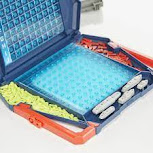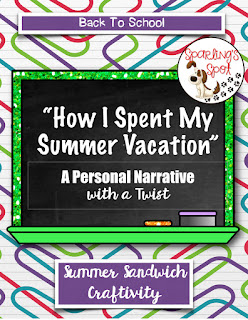Finding a Balance: Technology
in the Classroom
Blog, Technology, Freebie and Teaching Ideas
March 31, 2023
Technology has been a game changer for teachers and students in today's classrooms. But most changes that happen in education can be both beneficial and problematic. This blog will take a look at some of the pros and cons of technology use in the classroom and offer some suggestions to find a healthy balance.
Let's start by looking at some of the cons. I'm sure every teacher has noticed that students can be distracted by technology. Once or twice this year, I've reminded students that we are reading actual books, instead of grabbing our computers. Early in the year, we made a rule that independent reading time was for real books form their book boxes. There are also those students who will always try to get around the assigned computer task and jump on YouTube or Google. We also know that students can be more savvy then their teacher on how to get around security measures that are in place in our schools.
Another problem is that computers remove students from opportunities to socialize. This can cause kids to become isolated and disconnected from the teacher and their peers which can affect social, emotional growth. Continuing to plan opportunities for students to work with partners and small groups is an important skill to encourage face to face interaction and cooperative learning. We want our kids to become well rounded students as they move into adulthood.
Finally, technology can discourage creativity. Solving problems in creative ways can be stifled using a computer. Finding the answers may be faster, but writing things down and actually showing one's work is an aid to learning and memorization. Brain research has shown that writing by hand allows the brain to form more "hooks" to imprint learning.
Technology has also made lives a lot easier for teacher and students. For teachers, computers can gather data more efficiently and this data can guide our instruction. Computer programs can be individualized for our students and provide differentiation within our classrooms. Communicating with parents became easier with computers allowing schools and teachers to provide websites and apps that allow timely updates and dissemination of information.
The pros for students using technology in the classroom includes motivation. Computers excite students and improve their participation and engagement. They can offer advantages to access high quality and the most current information. Computers encourage students to investigate new topics and can provide supplemental learning with fewer resources. Technology can provide interactive presentations that engage students in their learning. It also allows students to create presentations that can dazzle their classmates.
Weighing the pros and cons reminds us as teachers to provide a healthy balance between activities that use computers and time to engage in non-screen activities in which students can thrive. Below are 5 ideas on how you can offer a balanced approach in your classroom.
5 Ways to Create Balance in your Classroom
1. STEM Activities - Students love these activities because they encourage problem solving, innovation and collaboration as they apply science, math, engineering and technology concepts to problem solve different challenges. There are som many amazing STEM projects out there. Here is a great one for Spring!
You can find the Spring STEM Build a Birdnest here.
 You can find the Plant and Animal Structures PBL here.
You can find the Plant and Animal Structures PBL here.
2. Logic Game and Puzzles - Games and puzzles played alone or with a partner increase kids' brain power. They require problem solving and are challenges to create strategies on how they will solve the puzzle or game. Pictured below is a fun paper and pencil game to challenge students' thinking. Click here to download this Estimation Logic Game FREEBIE!
3. Game Breaks - Most kids still love to play board games and there are so many great games that are educational and challenge their thinking. Games are also played with a partner or a group of 3 or 4 so learning to follow the rules of the game and working cooperatively with others is a bonus! I've listed some great games below to have on hand in your classroom. Game Day makes a great reward incentive, too!
Strategy Games: Battleship, Connect Four, Tic Tac Toe
ELA Games: Bananagrams, Boggle
Math Games: Yahtzee, Monopoly, Pizza Fraction Fun
4. Project Based Learning - It's so important to establish a culture in your classroom of inquiry and creativity. Not to mention, students have so much fun planning their project and incorporating all of their new knowledge. Planning for project based learning may start by first examining the core standards and your curriculum, but the understandings that your students can uncover while doing their projects help them to dig deeper into their understanding of these concepts. This Plant and Animal Structures PBL culminates with a poster that students create to share an animal that they choose to research.
 You can find the Plant and Animal Structures PBL here.
You can find the Plant and Animal Structures PBL here.5. End of Year Memory Book - Allow your students to be creative as they create this Marvelous Memory lap book. It will become a favorite keepsake for kids in any grade. It's also a motivating activity for those last days of school as they reminisce about the year with their teacher and classmates.
You can find the End of Year Memory Book here.
























































